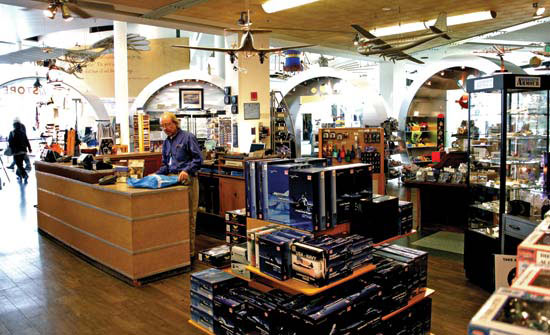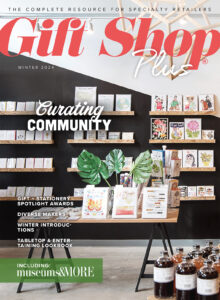Museum Gift Shops: A Snapshot in Time
Article Resources
Jody Zeppelin
Director of Retail and E-Commerce
International Spy Museum
Washington, D.C.
spymuseum.org
Andy Pineau
Retail Director
National Museum of the Marine Corps
Triangle, VA
marineheritage.org
Helene Silver
Retail Director
Tenement Museum
New York, NY
tenement.org
Rich Rime
Director of Sales
Seattle Museum of Flight
Seattle, WA
museumofflight.org
A captive audience notwithstanding, museum gift shops have had to revise marketing and sales strategies to keep revenue numbers strong. We take a look at how these novel gift stores are faring.
Unlike a stand-alone gift shop, a museum store is a captured venue. A captured-venue store is a retail location associated with some type of event or venue that has a built-in customer base. For instance, a sports and entertainment arena has some amount of seats and draws a crowd based on their events. A theater draws attendance based on the shows they put on. In this a case a museum draws visitors based on the content of its exhibits, the educational message, and the mission of the museum. In most museums, the store is the last place a visitor will go through before leaving. So from a financial standpoint, it’s the last opportunity for a museum to capture any more revenue.
Museum stores have a unique challenge in that they cannot carry items that are unrelated to the museum’s exhibits or mission. Doing so can jeopardize the tax benefits these non-profit institutions receive from retail income. This can frequently mean it may be difficult to jump on current trends and bring in the new “hot items.” At the same time, the captured venue means the museum store can count on a certain number of potential customers checking out the store.
At a time when everyone is competing for a decreased pot of discretionary spending, here are three strategies that museum gift shops are honing now more than ever.
Price rules
At the National Museum of the Marine Corps, 30 miles outside Washington D.C., Andy Pineau, Director of Retail Sales, saw revenue decline since opening in 2006. The museum doesn’t benefit from the everyday foot traffic seen in the city, and economic factors such as gas prices play a large part in whether people venture out of city limits to visit the stand-alone museum. Pineau has seen sales come back as the recession has improved, but they are still not where they were expected to be.
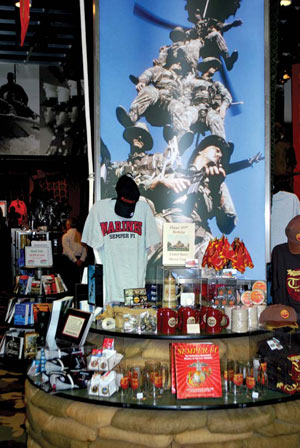 Strategies for increasing sales have relied on focused marketing and pricing. Since military veterans and families have strong support for the armed forces, especially the Marines, Pineau has focused marketing strategies to directly reach these supporters. When the Marine Corps marathon was held in D.C., the museum had discounts and coupons in every event participant bag.
Strategies for increasing sales have relied on focused marketing and pricing. Since military veterans and families have strong support for the armed forces, especially the Marines, Pineau has focused marketing strategies to directly reach these supporters. When the Marine Corps marathon was held in D.C., the museum had discounts and coupons in every event participant bag.
Pineau is also very focused on price points. He has buyers find price points that are reasonable for all budgets, and says he’s, “not focused on higher markups anymore. I’m happy to keystone items and turn them over more frequently to make up for slower sales with greater volume,” Pineau says.
Making marketing work
In the heart of Washington D.C., Jody Zeppelin, the Director of Retail at the International Spy Museum agrees that the economy has made consumers more discriminating with their purchases. The museum store is price-conscious but Zeppelin says it’s difficult to compete on price point for souvenirs, especially when there are street vendors selling three T-shirts for $10.
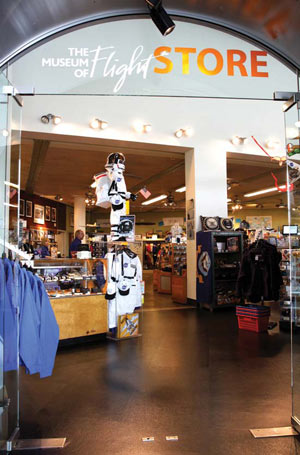 In an effort to shine a light on the store’s special selections, staff has hosted in-store product demos and frequent events such as book signings. In general, Zeppelin says, they “have to do more.”
In an effort to shine a light on the store’s special selections, staff has hosted in-store product demos and frequent events such as book signings. In general, Zeppelin says, they “have to do more.”
Helene Silver, Retail Director at the Tenement Museum in New York City and Rich Rime, Director of Sales at The Seattle Museum of Flight, say that a visit to a museum is still an economical option for a family, and both stress that their museums offer a lot for the money. The Museum of Flight focuses on exhibit content and new artifacts to keep people interested, and as a result, captures visitors’ attention for a long stretch of time. This helps sell products tied to the museum’s exhibits. Rime has seen increased sales of artifact-specific souvenirs and items like planes modeled after exhibit aircraft.
At the Tenement Museum, you will be hard-pressed to find a typical museum souvenir. “That standard stuff is tired,” Silver says. The product mix at the store is 60% books and Silver says she has one mug, one magnet, one pencil, one bag, and not a single T-shirt or cap. People are always interested in books, which do very well for the store. Since she’s been with the museum, Silver has seen the store in three different locations. Each has done exceedingly well, with the most current sitting on the ground floor of the museum encompassing the ticket and information desk. The store also acts as a holding area for people awaiting their admission which must be done by guided tour at different times throughout the hour. It doesn’t hurt to have 50+ linear feet of huge window frontage on the corner of Orchard and Delancey Street in New York City. Both Silver and Rime says strong tourism numbers are keeping attendance and sales strong.
Social media sells?
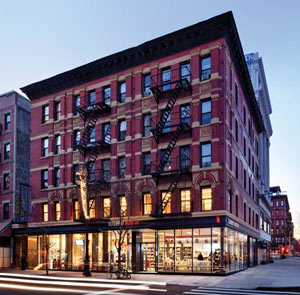 Museum stores are reaching out and staying connected with their existing (and potential) client base through social media. The most successful museum stores provide value, information or entertainment, and don’t just pound customers with sales offers. This can be a challenge when the museum store has a social media account separate from the main museum.
Museum stores are reaching out and staying connected with their existing (and potential) client base through social media. The most successful museum stores provide value, information or entertainment, and don’t just pound customers with sales offers. This can be a challenge when the museum store has a social media account separate from the main museum.
Pineau uses Facebook to reach more than 12,000 followers, a huge number. The store used a Facebook ad campaign to attract followers—Marines and Marine family members and supporters. The greater challenge has been for the store to convert these same followers into buyers. Facebook or other social media outlets don’t seem to have a measurable effect on sales. But it is still an important part of museum stores’ marketing strategy to keep people connected, and hopefully interested in store offerings.
It seems as if like most other gift shops, museum stores are incorporating newer methods of doing retail to stay ahead of the competition. The fact that they can piggyback on their host institution’s (usually robust) websites, helps. With wrinkles ironed out, this institution remains as strong and relevant as ever.
Mouse over images below to view.

